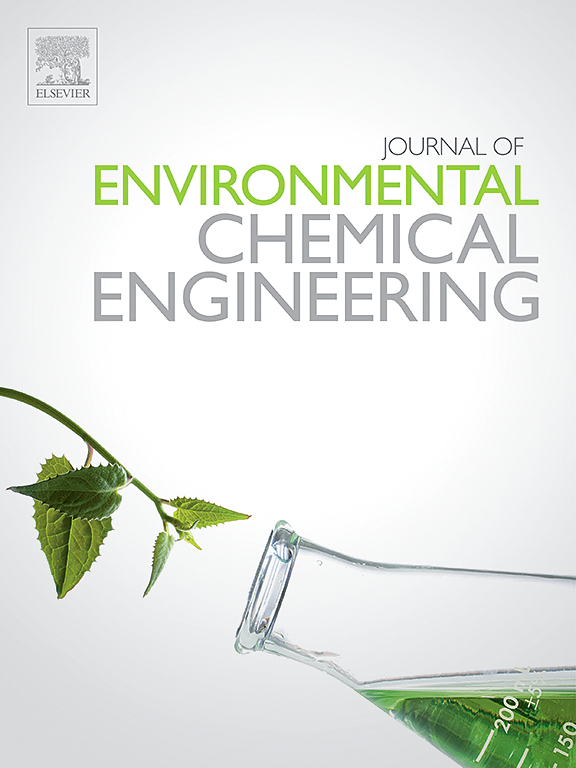增强去除水溶液中的铀:可见光下钒酸铋/热敏氮化碳光催化还原铀(VI)
IF 7.4
2区 工程技术
Q1 ENGINEERING, CHEMICAL
引用次数: 0
摘要
本文章由计算机程序翻译,如有差异,请以英文原文为准。
Enhanced removal of aqueous uranium: Photocatalytic U(VI) reduction over bismuth vanadate/hydrothermal carbon nitride under visible light
Photocatalytic removal of hexavalent uranium is an effective method for reducing radioactive uranium contamination in water. Herein, novel heterojunction catalysts, bismuth vanadate/hydrothermal carbon nitride (BiVO4/HCN), were synthesized and firstly successfully implemented for uranium removal. For example, the removal rate of U(VI) over 0.10BiVO4/HCN reached 98.5 % for the first time and more than 95.9 % for five consecutive cycles. Subsequent characterization analyzes confirmed that increased specific surface area, redshift of the absorption band, and efficient charge separation of the photogenerated electron-hole pairs collectively contributed to the improved photocatalytic performance. Noteworthily, free radical quenching and electron spin resonance spectroscopy results indicate that holes, photogenerated electrons, and superoxide radicals are the major active species for the photoreduction of U(VI). Finally, a possible photocatalytic mechanism of U(VI) removal was proposed.
求助全文
通过发布文献求助,成功后即可免费获取论文全文。
去求助
来源期刊

Journal of Environmental Chemical Engineering
Environmental Science-Pollution
CiteScore
11.40
自引率
6.50%
发文量
2017
审稿时长
27 days
期刊介绍:
The Journal of Environmental Chemical Engineering (JECE) serves as a platform for the dissemination of original and innovative research focusing on the advancement of environmentally-friendly, sustainable technologies. JECE emphasizes the transition towards a carbon-neutral circular economy and a self-sufficient bio-based economy. Topics covered include soil, water, wastewater, and air decontamination; pollution monitoring, prevention, and control; advanced analytics, sensors, impact and risk assessment methodologies in environmental chemical engineering; resource recovery (water, nutrients, materials, energy); industrial ecology; valorization of waste streams; waste management (including e-waste); climate-water-energy-food nexus; novel materials for environmental, chemical, and energy applications; sustainability and environmental safety; water digitalization, water data science, and machine learning; process integration and intensification; recent developments in green chemistry for synthesis, catalysis, and energy; and original research on contaminants of emerging concern, persistent chemicals, and priority substances, including microplastics, nanoplastics, nanomaterials, micropollutants, antimicrobial resistance genes, and emerging pathogens (viruses, bacteria, parasites) of environmental significance.
 求助内容:
求助内容: 应助结果提醒方式:
应助结果提醒方式:


